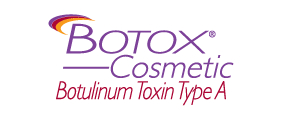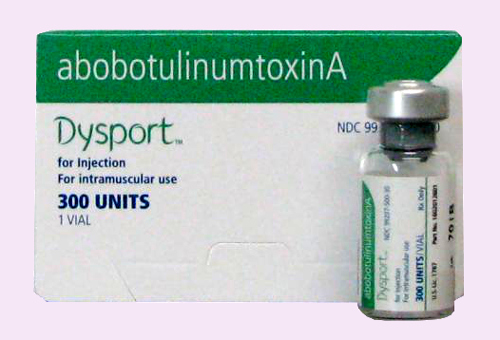Most Plastic Surgeons offer more than just Plastic Surgery, because not every wrinkle needs surgery. On the other hand, despite the latest glossy ad you may see, there is still nothing that replaces the quality, safety and predictability that today’s Cosmetic Plastic Surgery provides. This posting focuses on non-surgical Facial Rejuvenation.
Unlike a Facelift, the so called Liquid Facelift, fillers, cannot correct skin laxity, and unlike a Browlift, Botox® and Dysport® cannot lift a sagging brow, but they can help with the wrinkles. I use both these wrinkle reducers to both delay and enhance the results of my surgical procedures. If you have lines that look like “elevens” between the eye brows, or folds that look like “parentheses” around the mouth, there are non-surgical treatments which can reduce the length and the depth of these lines, and it can be done during a short office visit.
Starting at the Top.
 BOTOX Cosmetic from Allergan |
 Dysport from Medicis |
Botox and Dysport can reduce the lines that develop on the upper face. Both products are FDA approved to reduce the frown lines we get between our eyebrows; moreover, they are used off-label, to do much more. In many cases, a skilled plastic surgeon can reduce the following:
- Transverse forehead lines
- Frown lines (the “elevens” between the eye brows)
- Laugh lines or crows feet (around the eyes)
- Mild brow ptosis (mild sagging usually of the outer eyebrow)
Botox and Dysport are not fillers. They reduce wrinkles at the source, by inhibiting the muscle action causing them. Care must be taken with these medications, to inhibit the offending muscle actions while always trying to preserve normal animation.
The Mid and Lower Face
 Restylane from Medicis |
 Perlane from Medicis |
 Juvederm from Allergan |
 Radiesse from BioForm Medical |
Since Botox and Dysport reduce expression, they are not ideal for the mid to lower face. We can look normal without the ability to frown, but we need to be able to smile. This is why fillers are ideal for the correction of the lines around the mouth.
The most popular Wrinkle Fillers in the US today are hyaluronic acid (HA) based. HA is a clear gel, and a normal component of our skin and joints. There is no allergy to it, unless we are allergic to ourselves. The most popular HA fillers are:
- Restylane
- Perlane
- Juvederm
The most common areas treated with fillers are:
- The parentheses (nasolabial and marionette lines bracketing the mouth)
- The lips for enhanced fullness
- The fine lines around the mouth (smoker’s lines even if you don’t)
- Other mild to moderate wrinkles of the face
Radiesse is also a filler, but it is not an HA. It is white and gives a firm result. Good for deep lines like the nasolabial folds and marionette lines (i.e. the parentheses), but not as good superficially like in the lips where it may be seen or felt. Radiesse is also good for mild enhancement of the chin and cheek bones.
It is important to have a face-to-face evaluation with your plastic surgeon to determine if you are a good candidate for a procedure. This includes non-surgical procedures. When performed by a trained professional, the treatment should be simple and easy. If you are in the San Francisco Bay Area, and would like to have a consultation appointment in my Walnut Creek Plastic Surgery office, give me a call at (925) 943-6353. More information on non-surgical wrinkle reduction, check my main web site, www.DrMele.com .
Though not common, possible adverse reactions should be discussed with your plastic surgeon prior to initiating treatment. The most common problem with all these products is mild bruising, so you do not want to have your injections the day before you want your results. The results last for months, so allowing a couple weeks for the optimal results to develop is recommended.
There is some crossover between the Botulinum Toxins and the Facial Fillers. Sometimes deeper lines on the upper face may need a little filler to improve the wrinkle reduction and speed the results. Less frequently, Botox and Dysport are used on the lower face, to treat facial asymmetry, lip lines and neck (platysmal) banding. These are special cases and require careful selection in order to provide the best results.
Previous Post Next Post